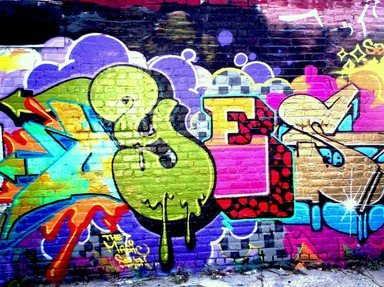Quiz Answer Key and Fun Facts
1. Start at the snake's head (letter F) and move one letter at a time in horizontal or vertical direction. Which word that uses all letters AT LEAST ONCE can you read from the snake's head to the snake's tail? To re-use a letter, you'll have to take a full turn over several letters.
2. Solve this cryptic clue. People with colour blindness may have some difficulty with this cryptic clue, so I'll mention that the word is printed in the colour of ripe tomatoes.
3. Move through the beehive and use all letters ONLY ONCE. Which word can you find? Start with the letter A at the top.
4. Here's an English proverb, but the vowels went missing. Pick ONLY THE LAST FOUR WORDS with the appropriate vowels (the second line, after the comma).
5. Start at the knight (the A in the upper left corner) and use the typical chess move a knight performs (in the shape of the letter L). Use all letters ONLY ONCE. Which word is hidden in this puzzle?
6. A letter sequence. Which capital letter do you have to fill in at the place of the question mark?
7. Which word containing FOUR letters can you put before all these words to obtain real words? This technique has been used before on FunTrivia and does not require much additional instructions.
8. In the game of checkers, a piece may capture any opposing piece by hopping diagonally over it. Multiple captures with the same move are possible. Use this method of capturing some letters and type in the word thus obtained. The piece with which you have to make the captures, is drawn between the letters T, I, E and N.
There are two valid solutions.
9. Use the letters from the first and third word to assemble the middle word (between brackets). The first line serves as an example. Which word can you assemble on the second line between brackets by using the letters of the words situated outside the brackets on the same line? Mind you: it is a generic word, not a proper name.
10. The techniques illustrated in the first nine questions were used in the first part of the TV show. As stated before, these were designed to solve within seconds.
The final part of the TV show was quite different: in a roster as featured hereby, two words of ten letters each are hidden. Three fundamental remarks: each word consists of ten DIFFERENT letters, and the correct words appear as lemmas (printed in bold) in a standard dictionary (so no conjugated verbs, no plurals - unless these are listed separately). It is not excluded that one word is American spelling and the other is British spelling (for words wiht spelling variations).
Which two words are hidden in this roster? Write down BOTH words separated by a single space.
Take your time. Writing down the letters on paper strips or using Scrabble tiles may prove very helpful.
Never mind the orange tiles - these are blanks.
Source: Author
JanIQ
This quiz was reviewed by FunTrivia editor
spanishliz before going online.
Any errors found in FunTrivia content are routinely corrected through our feedback system.

